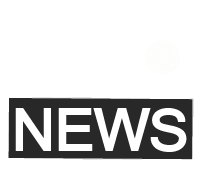Business
Procurement bottlenecks that purchasing platforms and requisition tools can solve

Procurement is a highly indispensable aspect of operational continuity that must be approached with care and diligence. The problem is that most establishments face significant challenges in managing their procurement needs in the form of delays, inflated costs, and inefficiencies. This is principally due to matters such as tough or siloed communications, outmoded manual procedures, and an absence of real-time visibility. By means of using contemporary purchasing platforms and requisition tools, it is likely for businesses to resolve these tests and streamline workflows. These tools not only enhance compliance but also assist companies in making better decisions that serve their procurement goals effectively.
Manual processes and approval delays
Manual procurement processes characteristically get exaggerated by human blunders, paperwork delays, and approval waitlists. A paper-based requisition model can take several days to move between the internal departments, leading to frustration for requestors and negatively impacting project timelines. A purchasing platform can power the approval workflows impeccably, steering the requests to the accurate stakeholders with strong, predefined rules and immediate notifications. This can meaningfully reduce the cycle times. The requesters can use apps to track the procurement status in real time, thus improving transparency and accountability.
Lack of spend visibility
Industries regularly brawl with poor visibility into their spending patterns, initiating budget overruns, identical purchases, and compromised supplier dealings. The procuring platforms can aid in consolidating requisitions, invoices, and purchase orders into one single dashboard, thus offering instantaneous intuition and analytics on expenditure by department, category, and supplier.
It can allow procurement teams to perceive spending leaks, make their procurement methods with long-term strategic goals, and even negotiate better contracts.
Maverick and non-compliant spending
Purchase requisition software can assist in implementing catalogue-based acquiring with pre-negotiated pricing, thus ensuring that the procurement is made from only the appropriate suppliers while upholding stringent compliance with organizational policies. Organizations can standardize growths and diminish unsanctioned spending by integrating procurement. Unrestrained purchases that are outside the approved supplier networks often upshot in missed cost-saving opportunities, maverick spending, and compliance risks.
Supplier management challenges
Managing supplier relationships physically with multiple vendors can be quite intricate, with challenges in compliance documentation, tracking performance, and delivery timelines leading to mistakes. Automated communication and documentation help to avoid the organizational burden on procurement teams, thus nurturing better, data-driven supplier relationships. Purchasing platforms provide centralized supplier management for performance monitoring, onboarding, and contract tracking.
Inventory and demand planning inefficiencies
Since there is a lack of accurate demand data when organizations need it, they tend to overstock and block their working capital, or understock and suffer operational delays. Contemporary requisition tools successfully integrate with inventory management systems. This helps to accomplish purchase requests inevitably when stock levels go down, thus optimizing inventory levels, dipping stockouts, and excess inventory holding expenses.
Improving policy enforcement & audit readiness
Policy non-compliance and unclear audit trails leads to interruptions during internal reviews and external audits. This often develop procurement bottlenecks. Whether it’s related to purchase approvals, spend thresholds and supplier selection, purchasing platforms with implanted compliance controls help ascertain that organizational procedures are appropriately enforced at every phase of the way. These AI-powered tools can automatically log every transaction, communication and approval in a secure and searchable format, making sure that procurement teams always remain audit-ready without scrambling to compile documents manually.
Supporting scalability during growth
As business organizations grow, the overall complexity of the procurement process rises. This results with increasing purchase volumes, diversified supplier bases and expanded categories. The AI-enabled purchasing platforms and requisition tools are designed to scale functions seamlessly, thus managing high transaction volumes while improving speed and compliance. They also allow organizations to add new suppliers, categories, and workflows easily, supporting expansion goals without losing control over the various critical procurement processes.
Labour-intensive procedures that were earlier relevant and used to work for small-scale tasks and operations become holdups in modern operations, thus causing delays, errors, and inefficiencies.
Smoothing Strategic Supplier Collaboration
Misalignment or miscommunication between suppliers and buyers causes Procurement interruptions. This often occur due to on delivery timelines, quality standards, and order specifications. Contemporary purchasing platforms assimilate supplier portals where contractors can obtain in real time purchase orders, confirm deliveries, and apprise shipment statuses. This collaborative environment condenses miscommunication and advances supplier relationships, guaranteeing faster procurement cycles and on-time deliveries.
It nurtures a culture of partnership rather than a complete transactional relationship with the suppliers. Furthermore, these platforms can track supplier performance, authorizing procurement teams to initiate data-driven deliberations for continual development.
Improving user adoption across departments
Contemporary requisition tools provide intuitive, user-friendly interfaces. This simplifies request creation, catalogue browsing, and approval processes for non-procurement staff. This reassures the employees to use standardized procurement workflows, thus reducing unauthorized purchases and guaranteeing better spend visibility and control across the organization.
A frequently overlooked bottleneck in procurement is low adoption of processes by internal stakeholders. It leads to maverick spending and delays.
Conclusion
Purchasing platforms and requisition tools allow corporations to direct compliance, structure workflows, gain visibility into their spending habits, advance supplier management techniques, and enable seamless collaboration. Procurement bottlenecks are notorious for dipping down viable operations, mounting costs, and exasperating all stakeholders across the organization.

-

 Health5 days ago
Health5 days agoFrance confirms 2 MERS coronavirus cases in returning travelers
-

 Health1 week ago
Health1 week ago8 kittens die of H5N1 bird flu in the Netherlands
-

 Entertainment5 days ago
Entertainment5 days agoJoey Valence & Brae criticize DHS over unauthorized use of their music
-

 Legal1 week ago
Legal1 week ago15 people shot, 4 killed, at birthday party in Stockton, California
-

 US News7 days ago
US News7 days agoFire breaks out at Raleigh Convention Center in North Carolina
-

 US News2 days ago
US News2 days agoMagnitude 7.0 earthquake strikes near Alaska–Canada border
-

 Legal4 days ago
Legal4 days agoWoman detained after firing gun outside Los Angeles County Museum of Art
-

 Health6 days ago
Health6 days agoEthiopia reports new case in Marburg virus outbreak




